Well, I’ll suppose that is the dream of most indoor gardeners. Luckily a realizable one.
Do you agree that hobby indoor gardeners should choose beginner-friendly houseplants that are hard-to-kill rather than those dramatic and demanding ones that spoil the fun ? I guess you do ! I guess you would also agree that it is needless to complicate things and it’s better to stick to those that work best for you. That’s why;
Our list of beginner-friendly house plants that are hard to kill will help you simplify your journey and make it fun.
Before we begin, permit me to share my:
Background story
A few years ago, when I began my indoor plant journey, I made plenty of mistakes, and a few of my plants died in the process. Information from the web was sometimes helpful but not all the time. However, I now recognize those mistakes as good experiences, from which I learned and grew.
The truth is, those experiences led me to acquire the knowledge I now possess and to start believing in the saying ”Trust the process.”
Yeah, I want you to emphasize trusting the process and believing in yourself.
As you embark on this beautiful plant journey, I want to encourage you never to categorize your experiences as disappointments because beauty is in the journey.
And, if you still consider yourself as one who lacks a green thumb, then these lists of hard to kill and ten beginner-friendly plants will spice up your plant journey because:
- Firstly, they are plants I own, and from experience, I can boldly say that their care is fundamental. You do not need to be a pro but you may become one.
- Secondly, they are hard to kill and affordable, meaning they are replaceable if they die, but I hope you keep all of them alive.
So what should you expect in the subsequent paragraphs ?
In the subsequent paragraphs, we will be taking a deeper dive into a list of beginner-friendly and trendy houseplants that are hard to kill and unsusceptible to plant pests.
I also intend to briefly explain the features of each plant and provide a summary of their care.
Sounds like fun, right ? Yeah, it is fun to have easy-to-care-for plants.
Without delay, we will hit the road to your victorious plant journey and revive your green thumb viscerally in no time.
1. Chlorophytum Comosum (Spider plant)
Chlorophyntum Comosum is a tuberous plant commonly known as (‘spider plant’) and native to South Africa. Mature leaves of spider plants can get up to 50cm long and 25mm bright while producing long tubes unto which young plantlets emerge. The robustness of the spider plant and its eye-catching variegations are captivating, which makes them count as the perfect plant for beginners and offices.
There are numerous reasons why you should consider adding them to your collection and why they are categorized beginner-friendly and tough to kill houseplants:
Firstly, spider plants are uncomplicated to propagate: A mature and healthy spider plant usually produces tiny plantlets or spiderettes which are easy to propagate. Plantlets with mature aerial roots usually qualify for propagation because they have a higher chance of surviving.
- Secondly, Spider plants require minimal care: Unlike other picky house plants, spider plants are known as low-maintenance plants because they can go for weeks at a time without water.
If you are hardly home or have a tight schedule, this is the perfect plant for you. They will also tolerate low lights and light frost, although comfortable in temperatures above 7°C.
- Thirdly, spider plants are non-toxic: If you have kids or pets running around in your apartments, spider plants are safe to include indoors. You can also display them however you choose.
- Fourthly, they are natural air purifiers: According to NASA, spider plants can remove indoor toxins such as formaldehyde and xylene.
- Lastly, Spider plants are available in variegated and non-variegated forms under the following species:
Other species of Chlrophyntum Comosum
- Chlorophytum Comosum (‘Vittatum’)
- Chlorophytum Comosum (‘Bonnie’)
- Chlorophytum Laxum (‘Zebra’)
- Chlorophytum Viridescens (‘Hawaiian)
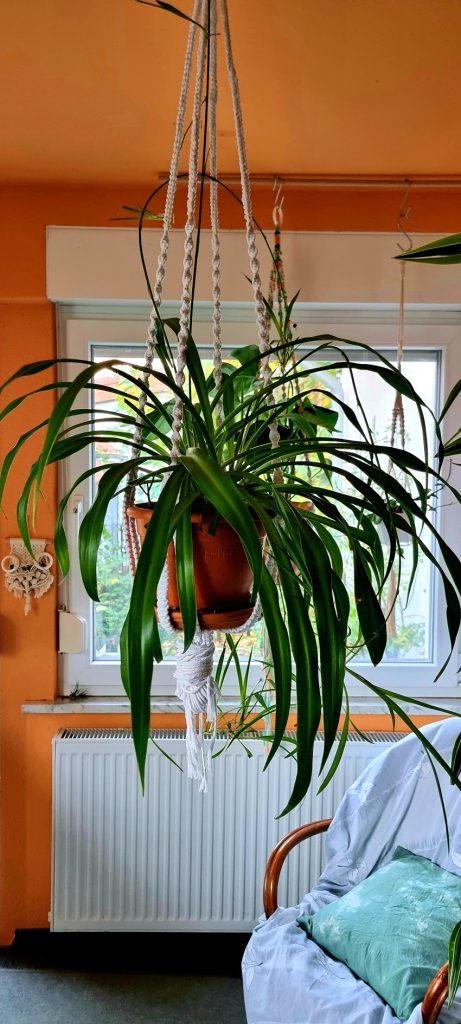
2. Monstera Deliciosa (swiss cheese)
In the jungles of southern Mexico and Panama resides this green wonder of nature. It’s dark to medium green, heart-shaped leaves with glamorous fenestrations can grow up to 5m high when supported by a moss pole. One of the most prominent characteristics of the sweese chees plant is not just its ability to attain such heights under minimal care but the exotic ambiance it brings to your home.
This gorgeous houseplant is a must-have for new plant parents, and I will tell you why:
- They are fast growers:
Are you a lover of fast-growing plants? Me too! From personal experience and under ideal conditions, my mini Monstera Deliciosa doubled its size in a time frame of 3-6 months. In the sixth, I was able to propagate it. After it has developed roots, you could decide whether to replant the propagation in the mother plant, or re-pott it as a single specimen in a well-draining potting medium.
- Monstera Deliciosa is easy to propagate:
If your Monstera has grown big and you wish to propagate it, then all you will require is a sharp and sterile pair of scissors, rainwater, and a vase.
Procedure:
Locate, the node of your Deliciosa (in simple terms, it’s a brown indentation on your swiss cheese or an area on a stem where a bud is located) and make a smooth cut with your sterile pair of scissors a few inches below the node.
Watch this video to see find out how I propagate my Monstera
As mentioned above, you don’t need to possess a green thumb to nurture a Monstera, but one thing to bear in mind is; plants with larger foliages turn to use up their water faster than those smaller and thicker ones like succulents or cacti. Therefore, if you forget to water it, it could sustain itself for some time but not longer than two weeks until the signs of water deprivation become significant.
A typical hint of water shortage in most Monstera plants is the browning of their foliages which is irreversible. At this stage, your only option is to remove the damaged foliages.
Most importantly, you need to regularly apply a nitrogen-based fertilizer during the growing seasons to encourage new growth and water once weekly, when the uppermost layers (2 inches) are almost dry.
Avoid overwatering to prevent root rot. You might want to consider a self-watering device to avoid overwatering or if you are mobile and not always at home.
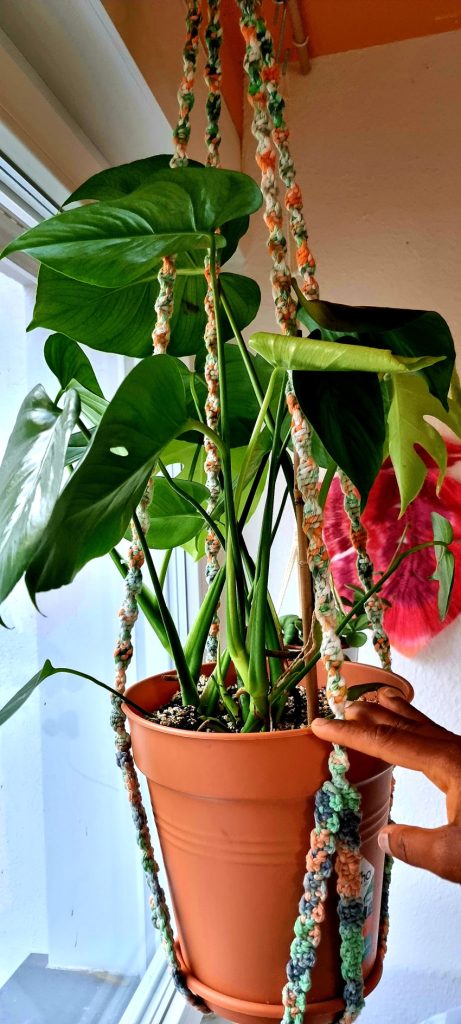
Other species of Monstera include
- Monstera Adansonii
- Monstera Obliqua
- Monstera Variegata
- Monstera Dubia
- Mini Monstera
- Monstera Thai Constellation
3. Epipremnum Aureum (Golden pothos)
Picture yourself laying down in the comfort of your cozy home surrounded by your elegant Epipremnum Aureum without needing to fly or travel to their natural habitats in Moorea, Australia, or Asia to witness them because you can grow them effortlessly.
Pothos plants (Devil’s Ivy) are popular and beginner-friendly house plants that are loved by many plant parents due to their hardiness, low demand, and striking variegated foliage.
Their thick, sturdy, trailing vines can be displayed in cascaded hanging baskets or supported to climb a moss pole or stem branch. If you offer them little care, they will reward you with beautiful, unique variegated leaves.
Furthermore, Pothos and Philodendron Scandens share similar characteristics in their features and care, although not related.
But, if you want your plant to flourish and produce healthy leaves, you need to water it regularly and pot it in a well-draining potting medium or substrate. This complete beginner’s guide to growing house plants will help prepare a well-draining medium for your plant.
Water once every 14 days, and you are good to go.
Finally, remember to regularly mist the leaves of your foliages with diluted Neem oil. Epipremnum Aureum (Golden pothos) is in water to keep them clean, increase humidity, and prevent pest infestation.
Bottom line:
Pothos plants will grow in the dark corners (not in total darkness) of your home, but please avoid underwatering or overwatering them.
To carry out a moistness check, dip your finger an inch below the medium or as far as it can reach. If your finger comes out dry, it’s time to water your Pothos.
Other species of Epripremnum Aureum include:
- Pothos ”Marble Queen”
- Scindapsus Pictus Arguraeum
- Pothos ”N’Joy”
- Lemon-Lime Pothos.

4.Peperomia Maculosa (Radiator plant)
Our herbaceous Peperomia Maculosa is the definition of an adorning, robust, portable, and easy-going plant perfect for your window sills and desktop tables. It is part of the Piperaceae family and is commonly referred to as the ”Radiator plant”, to which more than 1500 species exist. Its leaves are ovally-shaped and dark green with a shimmer of silvery stripes.
They are amongst our ten beginner-friendly and difficult to kill houseplant list because:
- They are succulent-like: If you’ve had a succulent, you will agree that their care is simple as ABC, likewise your Peperomia maculosa. An important detail to pay attention to is your potting medium. As foreseen, potting mediums for succulents must be water-draining and well aerated.
Water-retaining mediums and terrariums are succulent killers, keep your hands off of those.
- They are easy to propagate: Propagation is one of your best and most inexpensive way to achieve a fuller-looking plant or multiply your collection. You can either do it in rainwater or a potting medium.
But how do you propagate your maculosa? It’s straightforward.
Firstly, you need to sort out a healthy leaf and calf out a triangle at its base, with a sterile pair of scissors to prevent contamination.
Secondly, proceed by placing your cutting into a well-draining medium or in rainwater and wait for roots to develop. In a time frame of three to four weeks, at the latest six, you should start noticing new roots.
Finally, transfer your cutting into a suitable potting mix.
Bottom line:
Please treat your Peperomia Maculosa as if it were an Echeveria, and it will flourish. Bouncy leaves and inconspicuous spikes of flowers both indicate a healthy plant.
Other species of peperomias
- Peperomia Obtusifolia
- Peperomia Liadensis
- Peperomia Polybotrya
- Peperomia Verticilata
- Peperomia Rotundifolia
- Peperomia ”Rana verde”
- Peperomia Argyreia
- Peperomia Prostrata
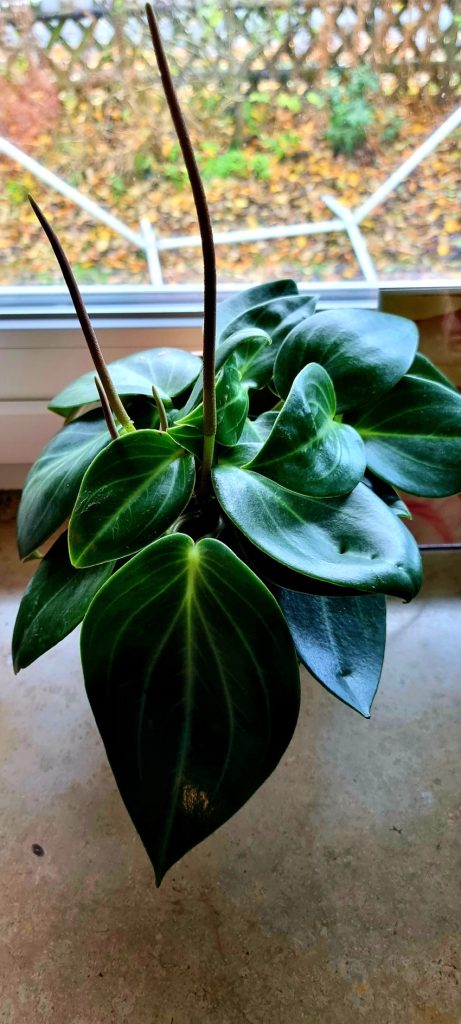
5. Asplenium Australasicum (”Birds Nest” plant)
Asplenium Australasicum is an epiphytic plant with crinkled margins and large fronds ( 50-150cm long and 10-20cm wide) that share a striking resemblance with banana plants. They are native to southeastern Asia, Eastern Australia, Hawaii, Polynesia, Christmas Island, India, and Eastern Africa.
Bird’s nest plants are epiphytic and terrestrial. Epiphytic ferns grow on other plants, while terrestrial ferns grow in planters both in and outdoors.
Their fronds grow in a manner that appears to look like a bird’s nest, which attracts certain bird species to build their nest and reside in the heart of the plant.
Unlike other famous ferns you might know (Holly Fern, Cinnamon Fern, Holly Fern, Australian Tree Fern, Asparagus Fern) grown indoors, the Asplenium Australasicum has minimal demands and is the perfect indoor plant for beginners. They are forgiving of partial negligence and prefer a shady spot with higher humidity levels.
Direct sunlight will damage the leaves of your fern, while inadequate light will result in lesser crinkles on the fronds.
So what is the optimum spot for your Birds’ nest ?
The optimum spot for your fern is either your bathroom or kitchen where humidity levels are higher because it’s beneficial to them. A second alternative is to regularly mist your plant to increase humidity levels and tidy up its fronds.
In addition to their care, water from the sides and not in the center to avoid water retention that may result to root rot.
Monthly fertilization of the plant during the growing seasons with a nitrogen-based fertilizer will ensure healthy growth.
Other species of ferns:
- Nephrolepis Exaltata (Boston fern)
- Platycerium (Staghorn Fern)
- Adiantum Raddianum (Maidenhair Fern)
- Nephrolepis Cordifolia “Duffii” (Lemon Button Fern)
- Microsorum Musifolium “Crocydyllus” (Crocodile Fern)
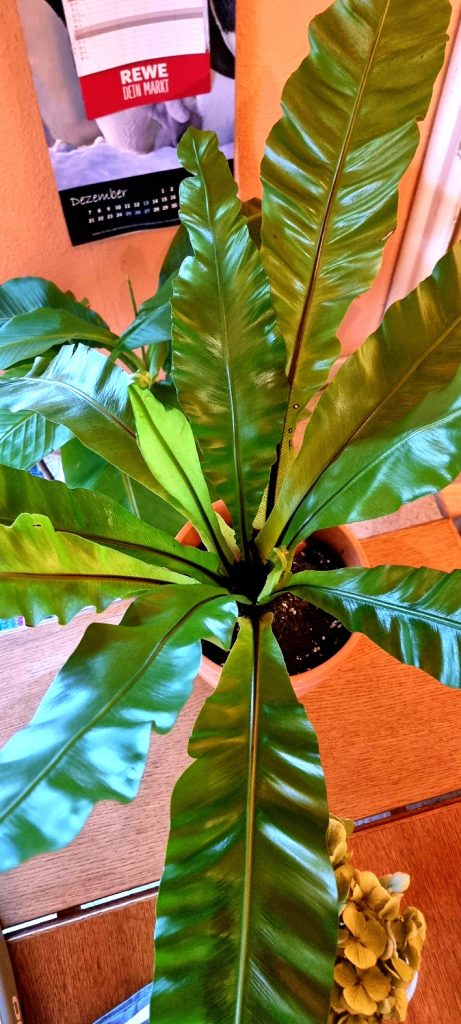
6.Philodendron Scandens (Heart leaf plant)
Philodendron Scandens are beginner-friendly and trendy houseplants known for their beautiful, dark-green leaves and thick vines, attaining lengths of up to 6m long. Their vines are more robust when they grow in their natural habitat in Central America than those grown at home. Their heart-shaped leaves are the perfect valentines day gift to your loved ones.
But what is it about the philodendron Scanden that makes it a perfect house plant for beginner hobby gardeners?
Here are the reasons:
- Easy to acclimate: The philodendron Scandens can adapt to many indoor light and temperature conditions. However, your plant will grow better in temperatures above 15°c.
- Minimal care required: If you are busy or you always forget to water your plants, then consider adding the Philodendron scandens to your assemblage.
- They need to be watered moderately and could go a week or two without water.
Bottom line
Philodendron Scandens will grow in low-light, under partial negligence. But, if you are looking forward to it flourishing, you need to provide it bright-indirect light. Direct sunlight will damage their sensitive leaves.

Other species of philodendrons:
- Philodendron Brasil (Philodendron Hederaceum ‘Brasil’)
- Philodendron Micans (Philodendron Hederaceum Micans)
- Philodendron Xanadu (Philodendron bipinnatifidum)
- Philodendron Pink Princess (Philodendron Erubescens)
- Philodendron ‘Congo Rojo’
- Philodendron Gloriosum
- Philodendron Birkin
7. Ficus Benghalensis (Banyan tree, Indian tree).
Ficus Benghalensis is a middle-toned plant with smooth upper and velvety lower surfaces. The first time I came across this plant online, it enchanted me with its shiny and ovated surface, so I ordered one. After its arrival and unpackaging, I was mesmerized by its beauty and texture.
So, in my blissful state, I relentlessly researched, and my findings were interesting.
Please tell me you can relate to my enthusiasm about this green beauty ? 🙂
I found out that in Buddhism, this tree is was held secret and is said to be the tree of enlightenment. Moreover, it’s also the Indian national tree.
Although Ficus Benghalensis has minimal demands when compared to Ficus Triangulais and Ficus Lyrata, they require bright filtered light and a well-draining medium. You need to fertilize it once every six weeks with a nitrogen-rich fertilizer so that it continues to sprout new leaves.
Do not be alarmed if your Benghalensis plant is not growing at the paste you anticipated. It is normal !
Bonus Tip:
You could also always cover the base of your ficus medium with other smaller plants to create a beautiful arrangement. Plants such as Fitonias, Peperomia Obtusifolia, Philodendron Micans, Pothos, and, Pilea Peperomoides are ideal because of their similar watering demands.
Bottom line
Ficus Benghalensis is generally a slow grower, but an ample amount of filtered bright light and fertilizer will speed up its growth rate.
Let nothing prevent you from adding the tree of enlightenment to your collection.
Other species of ficus house plants:
- Ficus Lyrata (Fiddle leaf Fig)
- Ficus Benjamina
- Ficus Triangularis (Triangle plant)
- Ficus Deltoidea
- Ficus Pumila ( Creeeping fig)
- Ficus Tineke Variegata
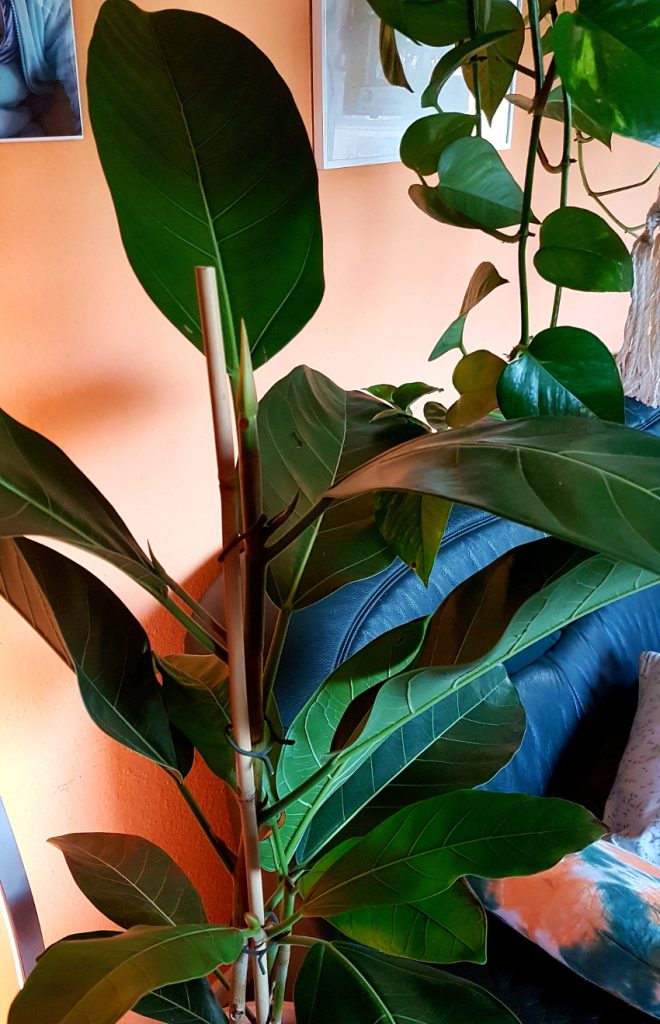
8. Sedum Morganiarum (”Donkey or Burro’s tail”).
The Sedum Morganiarum are beautiful, trailing succulents from Mexico characterized by plumped-shaped, fleshy leaves and red blooms.
Burro’s tails are the perfect plant for floating planters because of the lengths they can reach (a meter long).
An additional tip
If you dislike window blinds, consider displaying two or three Burro’s tails in a beautiful plant hanger to replace blinds and curtains. Fortunately, they are one of those succulents that will grow in full sunlight.
If the sunlight becomes intense, it will produce a coating (Epicuticular wax or farina) to protect it from sun damage. It‘s like the self-made sunscreen the plant makes. I’m fascinated by this phenomenon !
Summary care:
- Use a well-draining potting medium,
- Water once every three weeks in winter and once every two weeks in summer.
- Provide sufficient sunlight. South or east-facing window.
Bottom line
Although almost all succulents are beginner-friendly plants, the fastest way to kill succulents is to over-water them. Therefore, avert dense mediums that retain water. It is better to underwater than overwater.
In some temperate regions during winter, you should water them once every three weeks, and in summer, once every two weeks.
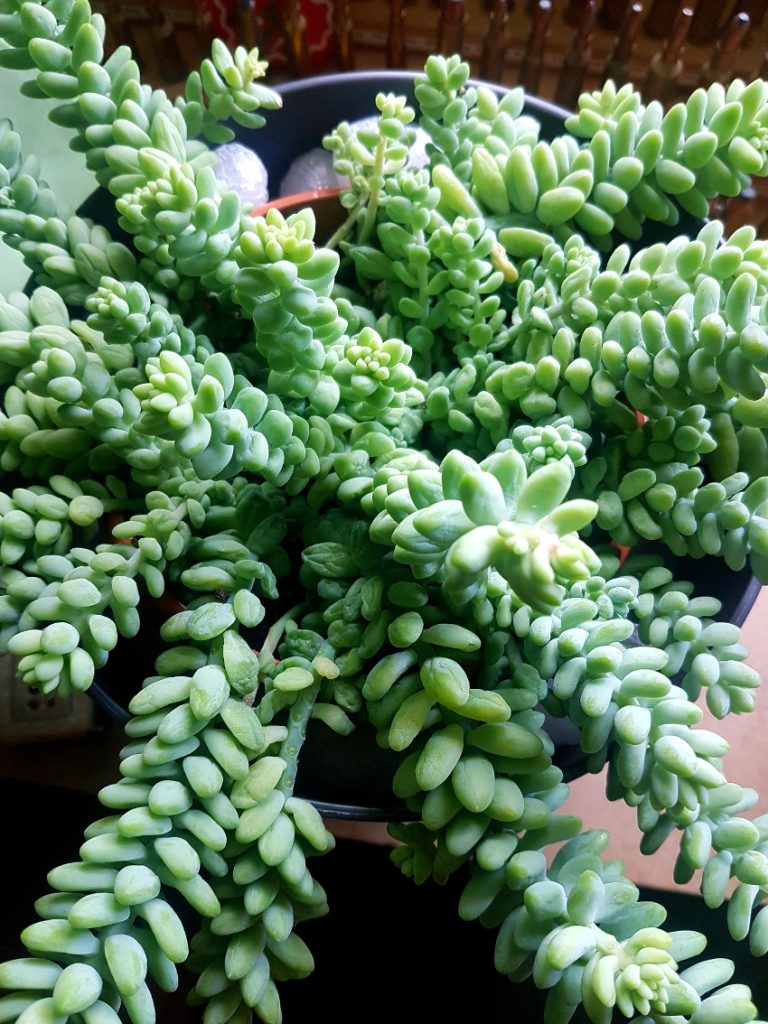
Other floating succulents/cacti:
- Senecio Herreianus (Strings of Beads)
- Portulacaria Afra (trailing elephant bush)
- Senecio Radicans (strings of banana or strings of dolphins)
- Strongylodon Macrobotrys (Turquoise jade vine)
- Echinopsis Chamaecereus (peanut cactus)
9. Pilea Peperomioides (Chinese money plant, Missionaryplant or pancake plant)
It is an evergreen plant with coined-shaped leaves that attaches itself to a brownish stem and might get up to 30cm high under the right conditions. It is native to the mountains of southern China Yunnan and Sichuan.
Although Pilea Peperomioides may share some distinct characteristics with other plants from the peperomia family, they are not related. This common misconception is due to its striking resemblance to Peperomia Polybotrya (Peperomia Raindrop).
Moreover, they are beginner-friendly houseplants because of how effortless they grow and multiply. Still, there are two things you must avoid:
- Never let the soil dry out completely: The best potting mediums for Pilea should be one that slightly retains moisture. The reason is that they cannot store water for long periods due to their smaller leaves and thin stem.
How to propagate your Pilea peperomioides
You can propagate Pileas by separating or cutting them with a pair of clean, sharp scissors.
You might choose to let them sprout roots in water or transplant them into a moisture-retaining potting medium because they prefer to be kept slightly moist. Extreme dryness will lead to loss of leaves.
I prefer to propagate Peperomoides in water and then transfer them into a suitable potting medium when it shoots roots, but you could also propagate them in soil.
A south-facing window should be able to meet the lighting needs of your Chinese money plant. Our is barely 15cm high, but we’ve been able to propagate multiple plantlets.
Summary care:
- use a moisture-retaining potting medium.
- Water regularly.
- propagate or transplant plantlets –
- Bright, indirect light will be ideal (South or East facing window)
Other species of Pilea peperomoides
- Pilea Cadiere (Aluminum Plant, Watermelon Pilea)
- Pilea Involucrata & Pilea Mollis (Panamiga, Friendship Plant)
- Pilea Microphylla
- Pilea Nummulariifolia
- Pilea Depressa
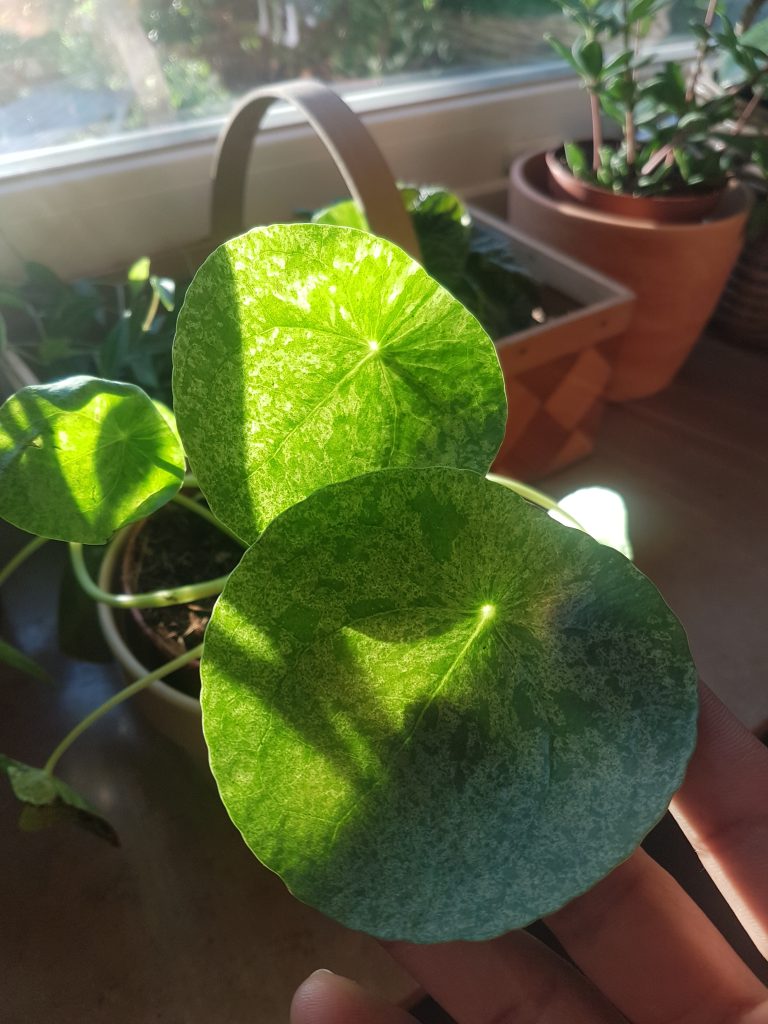
10. Charmaedorea Elegans (Parlor palm or Mountain palm)
This plant rekindles my childhood memories and evokes a happy feeling in me. Euphoric feelings, accompanied by the smell of fresh water, breeze, palms, dunes, and holidays in Hawaii.
Picture yourself living your best life and experiencing a holiday feeling in the comfort of your home, surrounded by your green parlor palm friends that migrated from Mexico and are now your best green friends. Such warm feeling words can’t express!
Although a slow grower, its dangling palm fronds will delight you, especially when it starts to produce beautiful yellow panicles of flowers at a very tender stage.
If plants have died under your care, the parlor palm is one of the hardest houseplants to kill. It will stand the taste of time!
Bottom line
As the saying goes, ”you cannot build a house on a broken foundation”. This saying references every house plant with regards to their potting medium. A well-draining potting mix is a key to a healthy plant (parlor palm), followed by indirect, filtered light and proper watering, although they will grow in shades.
In Fall and Winter, water your parlor palm once every three weeks and once every ten days in summer.
With these minimum needs, your parlor palm will flourish, and your efforts must pay off.
Additional tips:
Pair multiple plant specimens for a fuller and verdant green.
Summary:
- Go for a well-draining potting medium to avoid root rot.
- Water sparsely; once every three weeks in winter and once every ten days in summer.
- Provide them indirect or filtered light. Any well-lighted spot will be perfect for your palm. They will also grow in feeble lights but at a slower pace.
Other species of house palms:
- Livistona Chinensis (Chinese palm)
- Dypsis Lutescens (Areca palm)
- Ravenea Rivularis (Majestic palm)
- Chamaedorea Cataractarum (Cascade Palm)
- Yucca Aloifolia (Yucca palm)
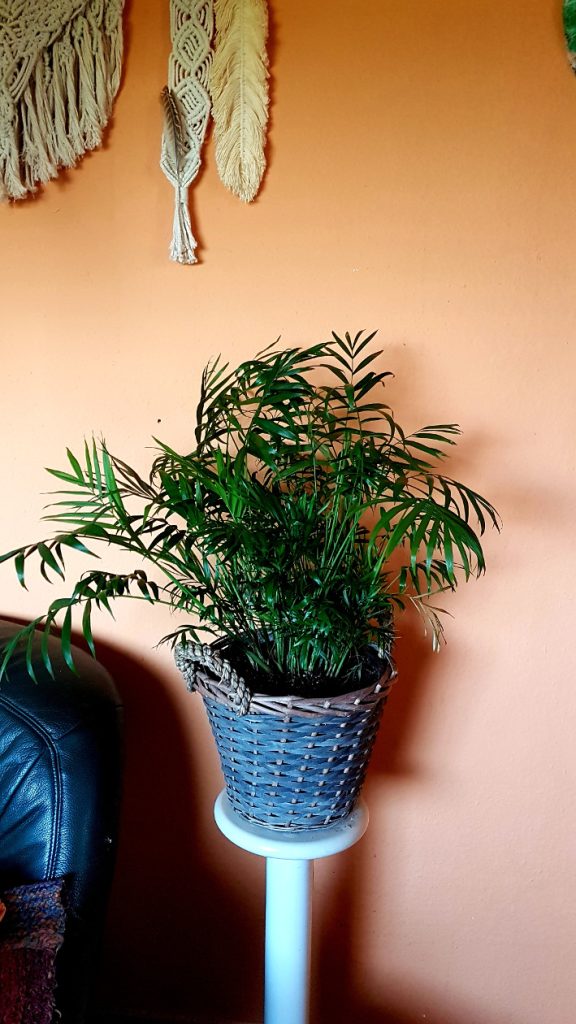
Takeaway
Plants are the most natural and mood-boosting companions that should not be missing in your homes. They are adaptable and will blend well with all apartment layouts. So let nothing stand in your way of adding some beginner-friendly and hard-to-kill house plants.
I wish you the best in your plant journey ! 🙂
Other interesting posts you may love !
A complete beginner’s guide to growing houseplants

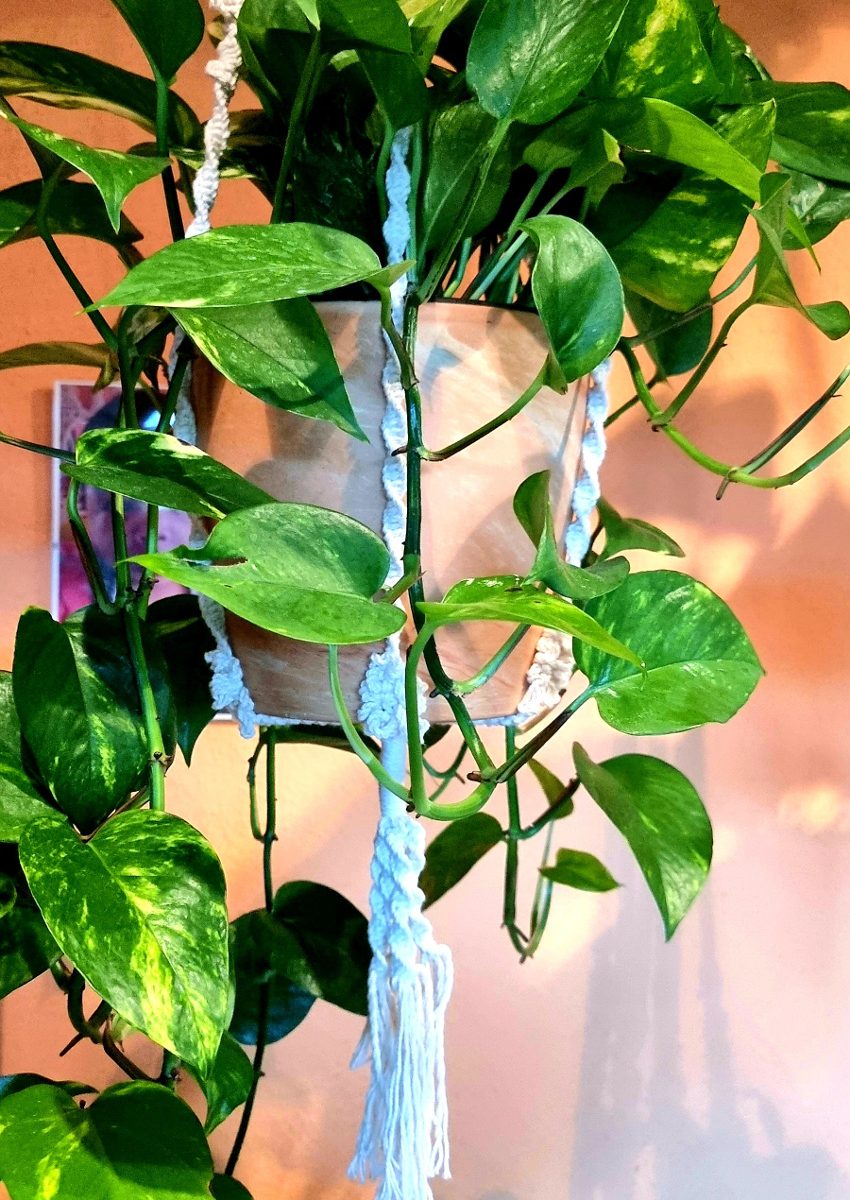
One Reply to “Ten beginner-friendly houseplants that are hard to kill”